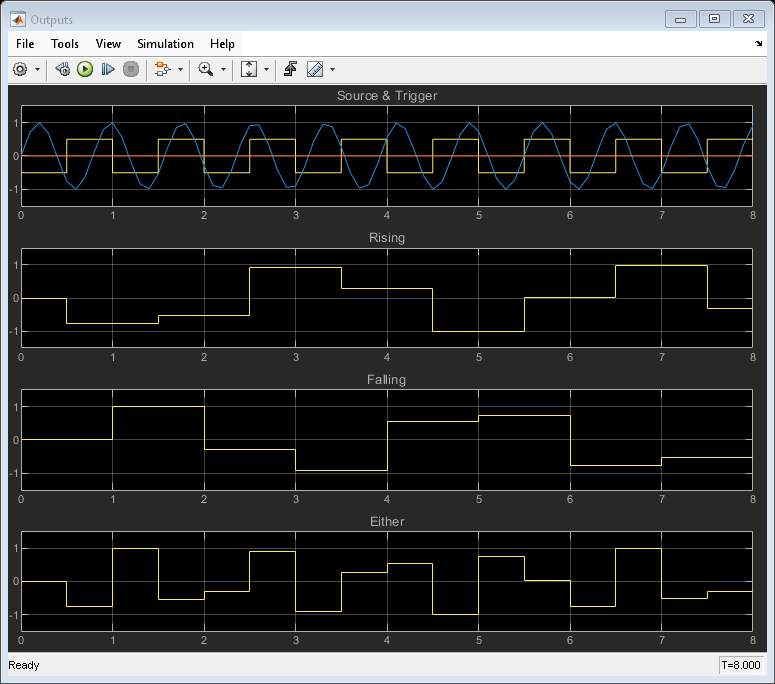Ground
Ground unconnected input port
Libraries:
Simulink /
Commonly Used Blocks
Simulink /
Sources
HDL Coder /
Sources
Description
The Ground block connects to blocks whose input ports do not connect to other blocks. If you run a simulation with blocks that have unconnected input ports, the software issues warnings. Using a Ground block to ground those unconnected blocks can prevent these warnings.
Working with Fixed-Point Data Types
When working with fixed-point data types, there may be instances where the fixed-point data type cannot represent zero exactly. In these cases, the Ground block outputs a nonzero value that is the closest possible value to zero. This behavior applies only to fixed-point data types with nonzero bias. These expressions are examples of fixed-point data types that cannot represent zero:
fixdt(0, 8, 1, 1)— an unsigned 8-bit type with slope of 1 and bias of 1fixdt(1, 8, 6, 3)— a signed 8-bit type with slope of 6 and bias of 3
Working with Enumerated Data Types
When working with enumerated data types, the Ground block outputs the default value of the enumeration. This behavior applies whether:
The enumeration can represent zero
The default value of the enumeration is zero
If the enumerated type does not have a default value, the Ground block outputs the first enumeration value in the type definition.
Examples
Extended Examples
Ports
Output
Block Characteristics
Data Types |
|
Direct Feedthrough |
|
Multidimensional Signals |
|
Variable-Size Signals |
|
Zero-Crossing Detection |
|
Extended Capabilities
Version History
Introduced before R2006a



